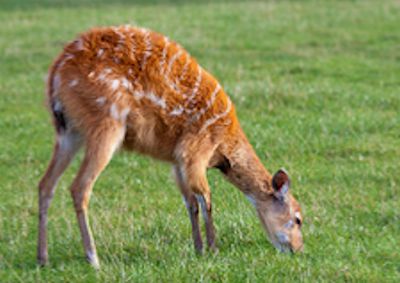Katonga Wildlife reserve
Katonga wildlife reserve is about 207 sqkm wide and it is located in western part of Uganda along the banks of River Katonga thus the name. River Katonga starts from the wetland located in the southwest of Lake Wanala and flows into L. Victoria with other sources joining the course from for example Lake George. Katonga wildlife reserve was gazetted as game reserve in 1964 and later in 1996 became a wildlife reserve. It is currently under the Kibale conservation area management.
Located within Kamwenge and Kyenjojo districts, the reserve is mostly covered by Savannah vegetation a kind of grassland. There is a mixture of vegetation types, for instance some places have acacia woodlands. Others have riverine and tropical forests here and there. But a big part of this reserve is occupied by wetlands which are seasonal. In some parts and permanent in other parts. Generally, there are various plants species and animals that found a home in this reserve.
 What to do in Katonga.
What to do in Katonga.
Game viewing
There is actually plenty to see while in Katonga wildlife reserve. You definitely can’t miss out on game viewing. If you’re interested in wildlife viewing, you have to go for a guided nature walk. Katonga wildlife reserve is a home to about 40 different animals species. So many antelopes that you may get to meet while out in the jungle. You can expect to meet the water bucks, Uganda kobs, Reedbucks, duikers, bushbucks, the famous but also rare sitatungas, otters and there are a few African elephants. About 60 impalas and 5 Zebras were introduced to the reserve in 2015. In an effort to restock their population and their numbers have significantly increased. Buffaloes and leopards and chevrotain are a few other animals that are commonly seen around the swampy areas.
There are also various reptiles and amphibians living in Katonga reserve. In addition there are other attractions like so many butterfly species that make the jungle colourful when they are flying around.
Bird watching
Bird lovers will also find this place very interesting. Katonga is home to over 150 different bird species. A keen birder might be able to spot over 100 different species while out on a walk with the help of a birding watching guide of course. There are tropical birds, the common swamp dweller birds and also the rare ones like the shoe bill storks.
Primate watching.
There are also a few primate species that live in the reserve especially in the forested parts of the reserve. The commonly seen species include the black and white Colobus monkeys, Vervet monkeys and Olive monkeys. There is not much of primates but these very few tend not to shy away from human presence which means you can easily find them along the path ways and trails as you walk through forests.
To be able to fully explore this reserve, you will need to go for that long walk around the reserve. And also jump on a boat, sometimes a canoe to visit places.
Where to stay while visiting Katonga wildlife reserve
There are no really established accommodation facilities like the case in the big national parks. The best that Uganda wildlife has done is to maintain a camping site. At a small fee you can pitch up your sleeping tent if you carried them. You can camp there with the guides and get meals from a small restaurant at the same spot or snack or your own. The best alternative if you are not interested in camping then you can consider staying at hotels outside the park.
Best time to visit Katonga wildlife reserve.
You can visit the reserve anytime of the year however, the dry months are a better option when the roads are passable compared to the wet months when the roads around are slippery and impassable. It may also be very tough to walk around the reserve during the wet seasons when the swamps a filled with water. Whenever you decide to visit Katonga, you can sure that your visit will be worthwhile.
How to get to Katonga Wildlife reserve
Along the Kyengegwa road, the reserve is just 3 hours away. When you reach Kyengegwa town council you will detour southwards for 42kms following well visible sign posts. Therefore, you can visit the reserve in just a day and you will be back to Kampala in time for dinner.

